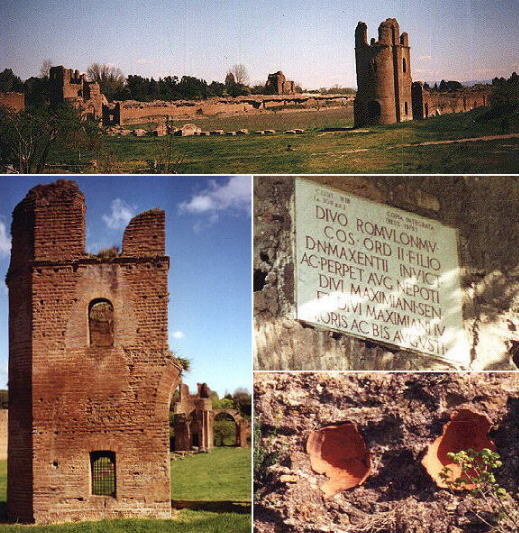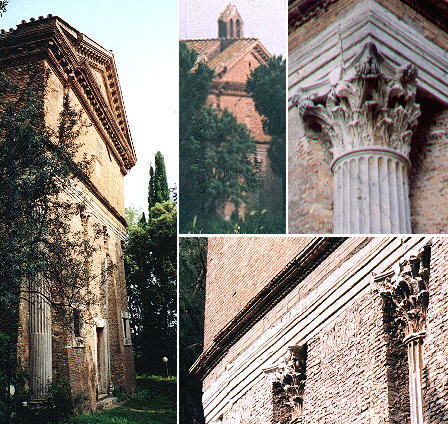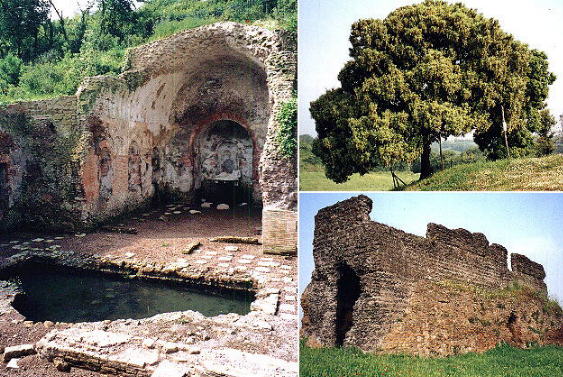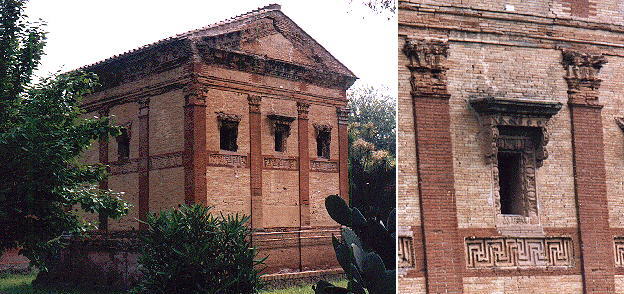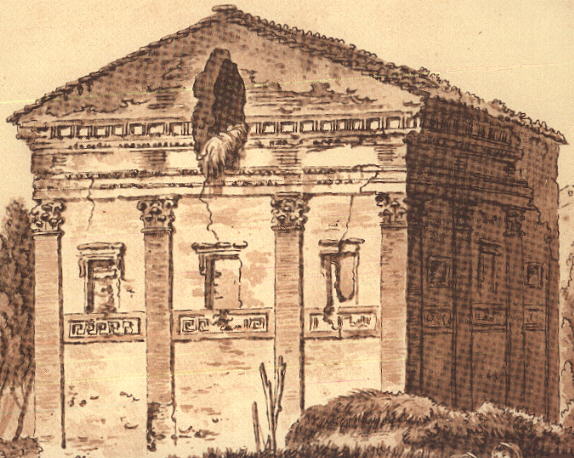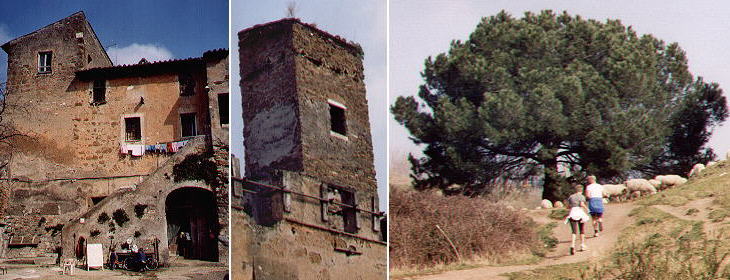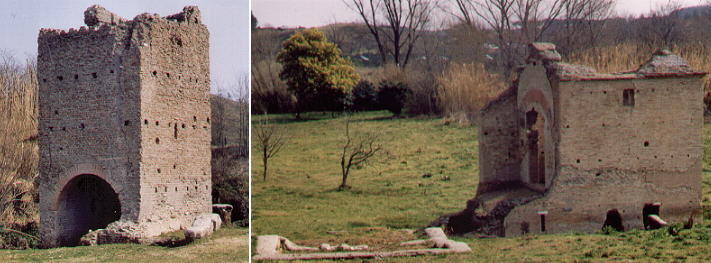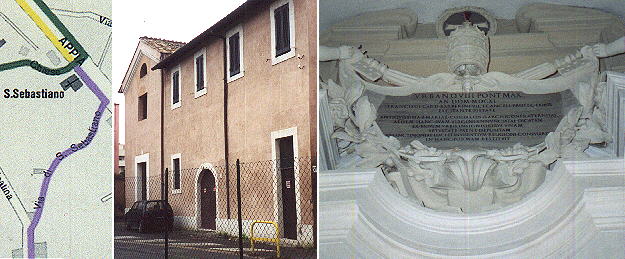  Basilica di S. Sebastiano (part two) (Book 3) (Day 5) (View C11) In this page:
Until 1825 the large circus near the tomb of Cecilia Metella was
called circus of Caracalla owing to a statue of the emperor found nearby.
In line with an inscription found by Nibby in 1825, it is now called circus
of Maxentius or of Romulus and we know that it was erected by Maxentius in 309 and dedicated
to his son Romulus (d. 307). Maxentius moved here an obelisk erected by the emperor
Domitian in Campo Marzio. The obelisk was brought back to Rome by Bernini
to top the statue of the Four Rivers in Piazza
Navona. The detail on the right lower corner shows the use of
pottery to lighten the vaults.
Off Via Appia Pignatelli, which links Via Appia Antica with Via Appia Nuova, a large restaurant which specialises in wedding parties offers in the package the little church of S. Urbano. It was originally a temple belonging to the villa of Herodes Atticus and was then converted into a little church. In 1634 Urbanus VIII restored it and the nice four columns of the pronaos were incorporated into the walls.
The area near S. Urbano was for many centuries associated with the
second king of Rome, Numa Pompilio. Here were located the sacred wood and
the grotto where he used to meet with the nymph Egeria, his patroness and
adviser. The grotto is actually an artificial cave, once adorned with statues
and used as a summer resort for the large suburban villa of Herodes Atticus
and then incorporated in the palace of Maxentius: in the XVIIIth century a visit to the grotto was a must for the educated traveller: Goethe himself sketched it.
This elegant brickwork temple (IInd century A.D.) was thought to be the temple of the Deus Rediculus, but it is now associated with a tomb erected by Herodes Atticus in honour of his wife Annia Regillia (whom he was suspected to have put to death). Its rich decoration has a baroque flavour. For centuries it was used as a hay-loft, as shown in this 1789 drawing by Carlo Labruzzi.
Valle della Caffarella
The most elevated points of the park offer views which are unspoiled by modern buildings. The images above show (left) Cecilia Metella and S. Urbano; (right) the dome of S. Pietro and Porta S. Sebastiano.
The main farm in the park is a sort of little fortress with a watch tower. Sunday joggers have to find their way through flocks of sheep.
Torre Valca is the current name of a medieval tower built by the Caetani to protect their fortress next to Cecilia Metella. The building which is located on a little stream (river Aimone) was called Valca after gualchiera (fulling-mill) a process of the textile industry for which it was used in more recent times. A Roman building near Torre Valca is known as Colombario (dovecot) Costantiniano but it is a tomb of the same period of Sepolcro di Annia Regillia.
The most pious pilgrims could expand their visit of the seven churches
by reaching from S. Sebastiano the monastery of S.
Paolo alle Tre Fontane or Santuario del Divino Amore. A narrow lane
(via di S. Sebastiano) leads to these rather remote locations. The pilgrims
could find a little rest in the chapel of SS. Annunziata, which still retains
the inscription celebrating its restoration by Urbanus VIII.
You can see more of Via Appia in my pages about Via
Appia from Cecilia Metella to Torre in Selci and Via
Appia from Torre in Selci to Frattocchie.
Return to part one (S. Sebastiano and Cecilia Metella). Next plate in Book 3: Basilica di S. Maria in Trastevere
Go
to |
